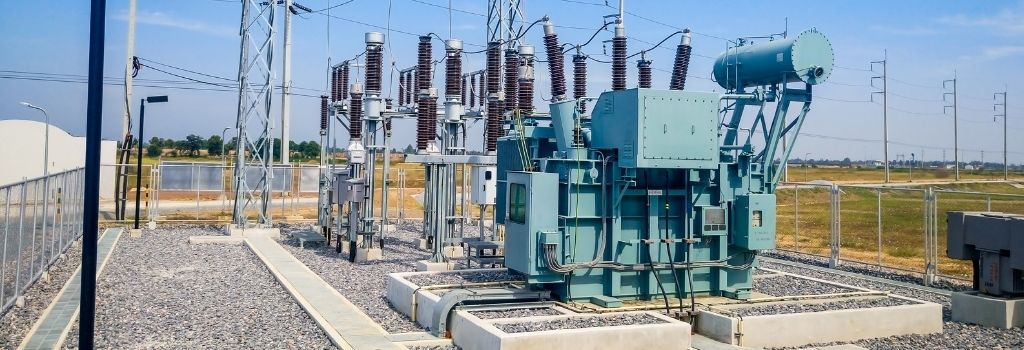- 세부
- 카테고리: Power and Energy
As we evolve into the era of 5G, the benefits 5G deployment are inevitably on the tops of everyone’s mind. But one often overlooked topic that should not be ignored as we look into this exciting future is the role of cybersecurity. This is especially true for critical infrastructures, such as electricity generation. With grid modernization picking up speed around the world, utility service providers need to also bear in mind the evolving cybersecurity threats that come with modernization, and many already are. However, a significant challenge during the modernization of cybersecurity capabilities is identifying and utilizing IT technologies that can work in harmony with operational technologies. Modernization and interconnection are crucial to having robust security without compromising their services, which typically rely on assets not designed with 5G and modern technologies in mind.
더 읽기: Protecting Smart Grids and Critical Infrastructure with Industrial Firewalls
- 세부
- 카테고리: Network Computing
The HEVC encoder compresses a raw video feed at it source and is a much better alternative to the H.264 standard codec. When compared with H.264, HEVC’s advantage is obvious as it allows for as much as 50% lower bandwidth consumption.
더 읽기: NCA-5210 & NCS2-NV02: Delivering Agile, Scalable And Adaptive Video Transcoding Performance
- 세부
- 카테고리: SD-WAN
When you think of a filmmaker's arsenal of equipment, it probably conjures up images of video cameras, boom mics, lighting kit, etc. That isn't a wrong assumption by any stretch. However, there is more to it than that given how filmmaking and technology have evolved. Today, in an era of live streaming and high-definition content, reliable connectivity is just as important as traditional considerations such as cinematography. This is where mobile SD-WAN appliances come in. Mobile SD-WAN appliances are now an essential piece of equipment film crews and creators must have on hand, especially when filming in locations with spotty internet connectivity.
더 읽기: Mobile SD-WAN Appliances Enable Reliable Multi-WAN Connectivity for Remote Video Production
- 세부
- 카테고리: Intelligent Systems
Data centers are and will continue to serve as the backbones of our modern world. From watching your favorite shows on video streaming platforms to communicating with colleagues overseas, data centers enable the online services and resources that empower the way we live and work. As a result, ensuring the optimal operation and security of our data centers is crucial. To realize this, data center administrators require the ability to collect, consolidate, and analyze data across the board. This is best achieved via Data Center Infrastructure Management (DCIM) that leverages surveillance technologies, network appliances, sensors, and monitoring software. Through effective DCIM, administrators have an indispensable tool to measure, manage, and control data center utilization and energy consumption of all IT-related equipment and facility infrastructure components, including air conditioning systems.
더 읽기: Realizing Efficient Data Center Infrastructure Management
- 세부
- 카테고리: Transportation
Digital police camera systems depend on a good-sized data store. Without it, police cars would have to download video manually at the end of every shift. Additionally, in-vehicle car video systems are not reliable as they are too fragile for the constant wear and tear of police usage. Police vehicles face constant shock, vibration, and exposure to nature’s elements, like wide temperatures and humidity.
더 읽기: Rugged In-vehicle Computer Empowers Police Car Remote Surveillance System
- 세부
- 카테고리: SD-WAN
In order to maintain high customer responsiveness, increase sales, and reduce wide area network costs and complexities, large-scale retailers are turning to software-defined wide-area networking (SD-WAN) systems. SD- WANs run on virtualized servers that deliver high availability and agile branch office connectivity. Intel® Network Builders partner Lanner Inc. recently worked with SD-WAN expert 128 Technology to deliver SD-WAN for 5,000 stores of a nationwide auto parts retailer.
더 읽기: Lanner and 128 Technology Deploy 5,000-Store Retail SD-WAN
- 세부
- 카테고리: Power and Energy
Like most people in the developed world, you probably take access to clean water for granted. Whether in the bathroom flushing the toilet, in the kitchen washing vegetables, or outside watering your lawn, clean water is always just a faucet away. What's more, people also take for granted a clean living environment free from human waste and the nasty diseases that come with it. Unless you have watched a documentary film about wastewater treatment, you've likely had never given it a second thought on where your waste goes and where your clean water comes from. The fact of the matter is that wastewater treatment is a comprehensive and time-consuming process that requires constant vigilance and a vast network of pipes. Given its complexity, even the tiniest malfunctions, such as a leaky pipe, can cause massive disruptions to the entire process and negatively affect customers and the environment. Luckily, in the twenty-first century, we benefit from technology to help us manage the complexities of wastewater treatment and water distribution; among them are computer-based remote monitoring solutions.












